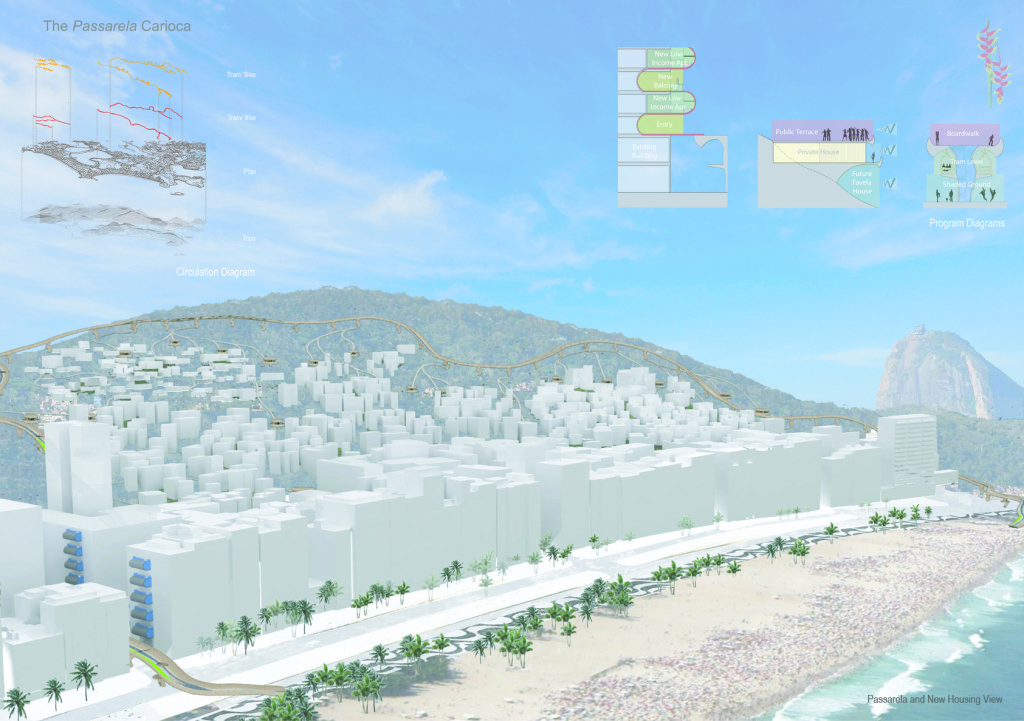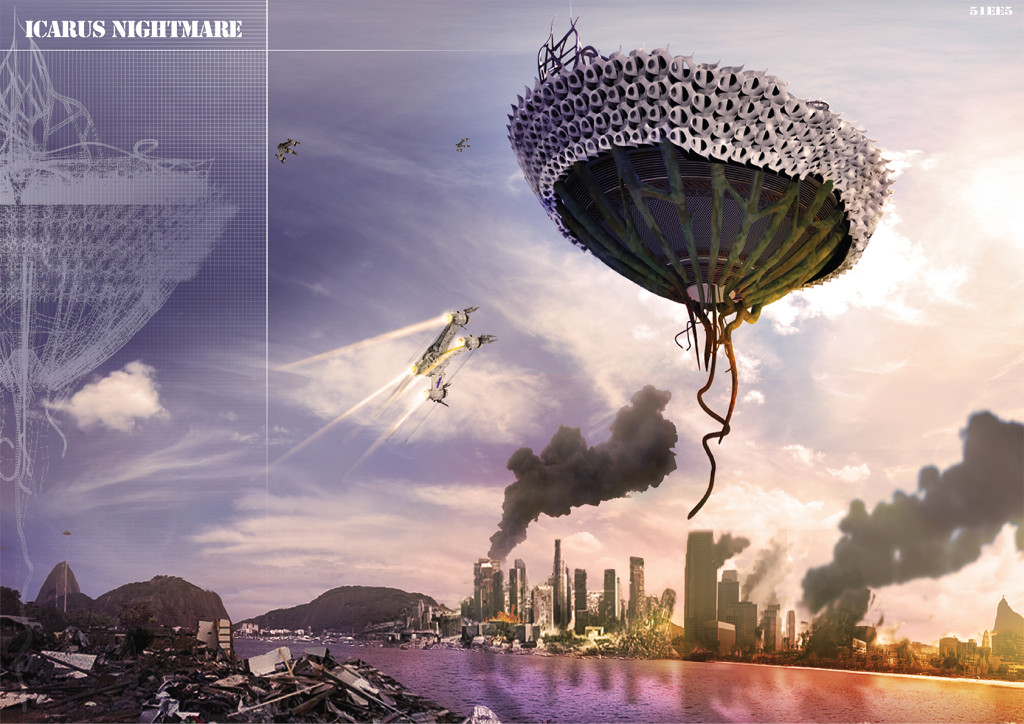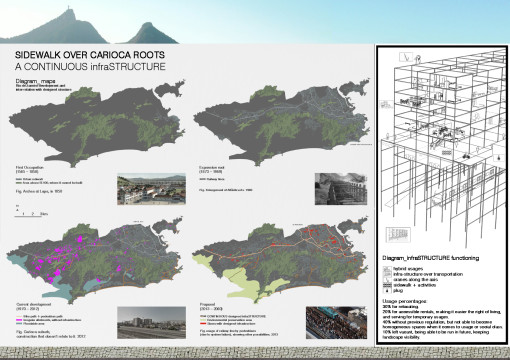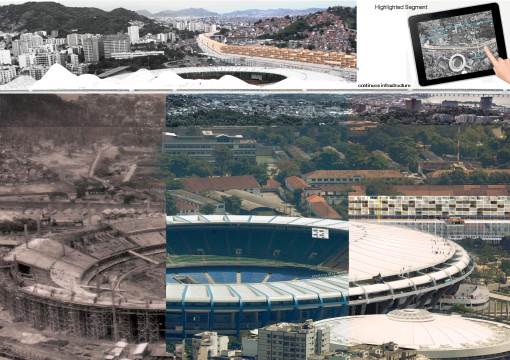Info:
Title: SIDEWALK OVER CARIOCA ROOTS: A CONTINUOUS infraSTRUCTURE - Code: 5d61cContest: Rio de Janeiro / 2013
By: Honorio Magalhães
Views: 3583 Likes: 1
Votes:
Alejandro Zaera-Polo 5 Jeffrey Inaba 5 Jeroen Koolhaas 2 Hernan Diaz Alonso 1 Cristiano Toraldo di Francia 8 Pedro Rivera 84.8
SIDEWALK OVER CARIOCA ROOTS: A CONTINUOUS infraSTRUCTURE
The city is becoming generic and expanding its territory. Rio de Janeiro has developed along railways and it must now return to its roots. Rio was concentrated, until 1858, near its port, due to the necessity of proximity to work and the lack of mass transportation. The city urbanization and expansion moved forward specially towards the North, becoming the reason and the consequences of urban transportation development, with the arrival of the railway. In 1873, the streetcar lines were implanted and served the peri-urban area, which included Maracanã and its surroundings. In this way, a dense suburb was being formed alongside the railway, with rich culture and intense social exchanges, that include schools and communities responsible for the greatest show in the country, the Carnival, symbol of Rio de Janeiro. Despite its importance, the city has always reneged the suburb and its priority, preferring the center and south areas and, with the consolidation of those, investing in Barra da Tijuca, neighborhood that will host the Olympic Games 2016. Thus, the population displacement in the city happens towards nearby investment areas, occupying an environmentally fragile area, far from downtown and mass transportation, leaving urban tissue fragments throughout most part of the city as unoccupied areas. Besides Carnival and Samba, Rio has always been known for its inhabitants, the cariocas, for their welcoming spirit, intense relation with the city, making it their own, specially in areas that are close to transportation and infra-structure, where thise relations happen: Copacabana sidewalk, Aterro do Flamengo, the cable car of Sugar Loaf, the Arches at Lapa are the main postcards of Rio, alongside with Christ the Redeemer and some other well established spaces in town. As important to characterize Rio as its suburbs and postcards are its slums, where typical city relations happen with more intensity due to its necessity. The occupation is hybrid, where the living space is often the same for productive and commercial activities. As a translation of those characteristics, it is proposed a CONTINUOUS infraSTRUCTURE on the railway lines, with scale equivalent to half of Copacabana, in 3.15km2. Above the substructure level and the street access level, a grid enables the insertion of modules with programmable hybrid state that can be assembled and moved easily along the structure. The ground level works concentrating people, diverse activities, such as street markets, or simply as a promenade sidewalk, that directs to the possibilities above and to the city. It connects different parts of Rio that are crossed by the 105km of railway. The infrastructure character is reinforced by plugs with sportive, cultural and educational functions. With this project, it is expected an improvement in mass transportation and an irradiation of revitalization. Rio should turn to itself, paying regard to its culture and solving its inequality issues.
Info:
Title: SIDEWALK OVER CARIOCA ROOTS: A CONTINUOUS infraSTRUCTURE
Time: 4 agosto 2013
Category: Rio de Janeiro
Views: 3583 Likes: 1
Tags: -








